Moroccan food! We list 15 Moroccan specialities and share our experiences of Moroccan food. In Morocco, you'll find tagine, couscous and lots of delicious spices. Join us and taste Morocco!
Table of contents
What to eat in Morocco?
What to eat in Morocco? We have visited Morocco three times. The first time we visited Marrakech, the second time we went to Sahara desert and the third time we experienced Agadir holiday resort.
On all our trips, we have found the food to be colourful and tasty, although there can be some repetition with lots of couscous and tagine. The food culture is partly part of Mediterranean cuisine, while there are influences from many different cultures, such as Berber, Middle Eastern and the rest of Africa. In other words, exciting!
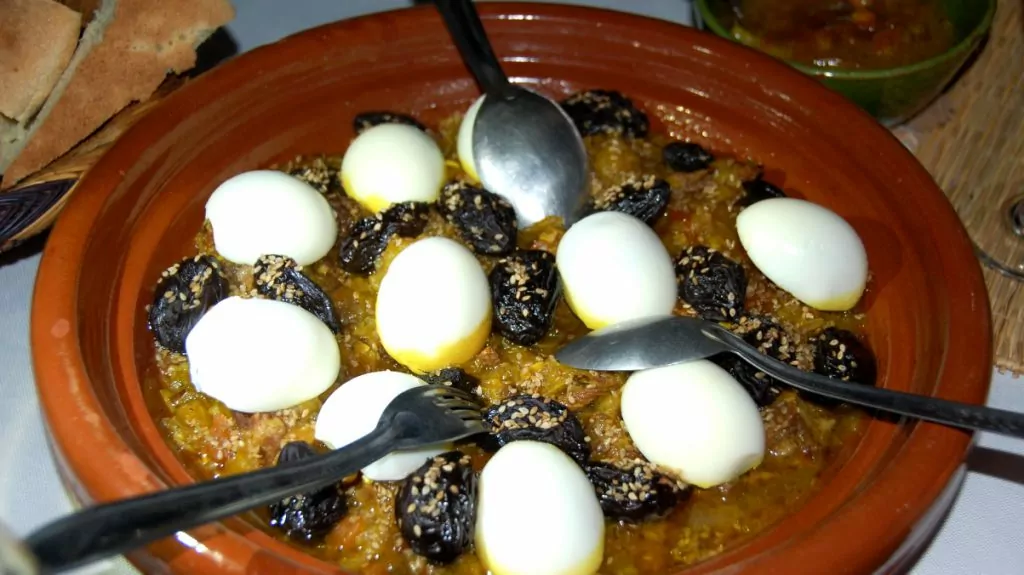
Moroccan cuisine
A meal in Morocco tends to start with salads and bread, followed by tagine and couscous. To finish, you can count on mint tea. The dishes are not necessarily spicy, but often full of spices and flavours.
Imagine contents such as onions, lemons, olives, pomegranates, dates, figs, nuts, coriander and mint. There is also a spice blend called Ras el hanout, which traditionally consists of up to 30 ingredients. Here are 15 dishes and specialities of Moroccan cuisine.
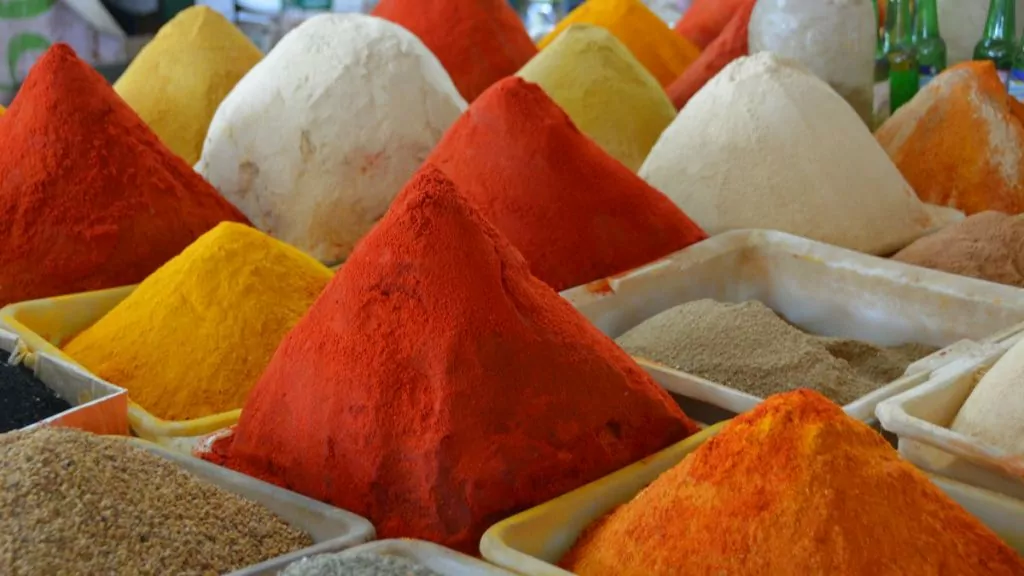
1. couscous
It doesn't get more Moroccan than this. Couscous is the national dish of Morocco, and each region has its own speciality. Recipes are based on couscous grains, which are cooked with oil and spices. Couscous dishes can also include vegetables, root vegetables, chickpeas, chicken and fish.
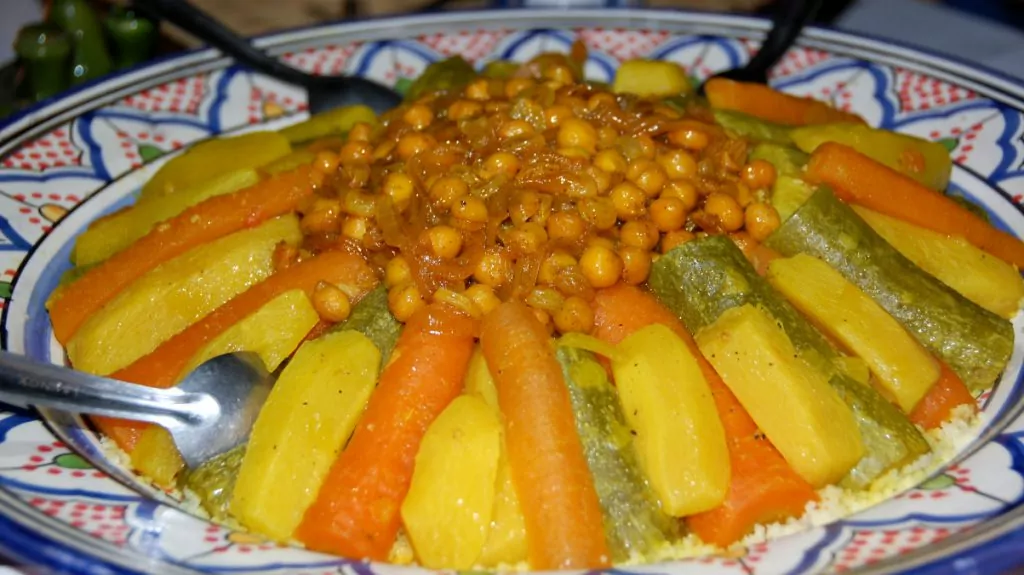
2. Moroccan bread
Moroccan bread is well worth savouring! There are several different traditional breads in the country, such as khobz. Often bread is served with the meal, especially with the starters. Sometimes we have had bread served with oil, honey or nut cream to dip in. Sooo good!
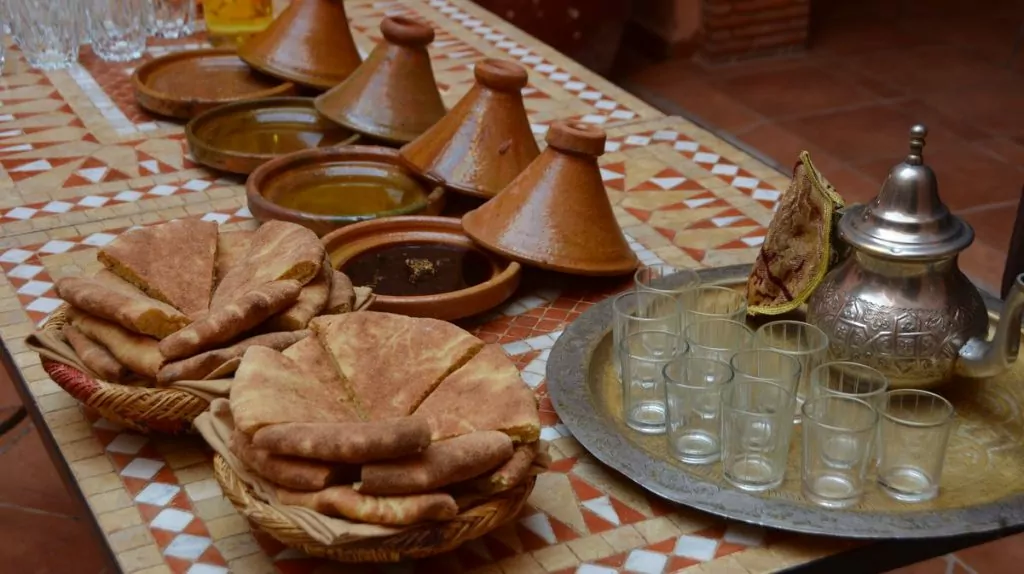
3. Salads and vegetable mixes
In addition to bread, it is common to be served various salads and vegetable stir-fries to start a Moroccan meal. These salads and stir-fries can be made with different vegetables, raw as well as cooked, such as tomatoes, peppers, courgettes, okra or aubergines. Often a tasty and pleasant start to the meal!
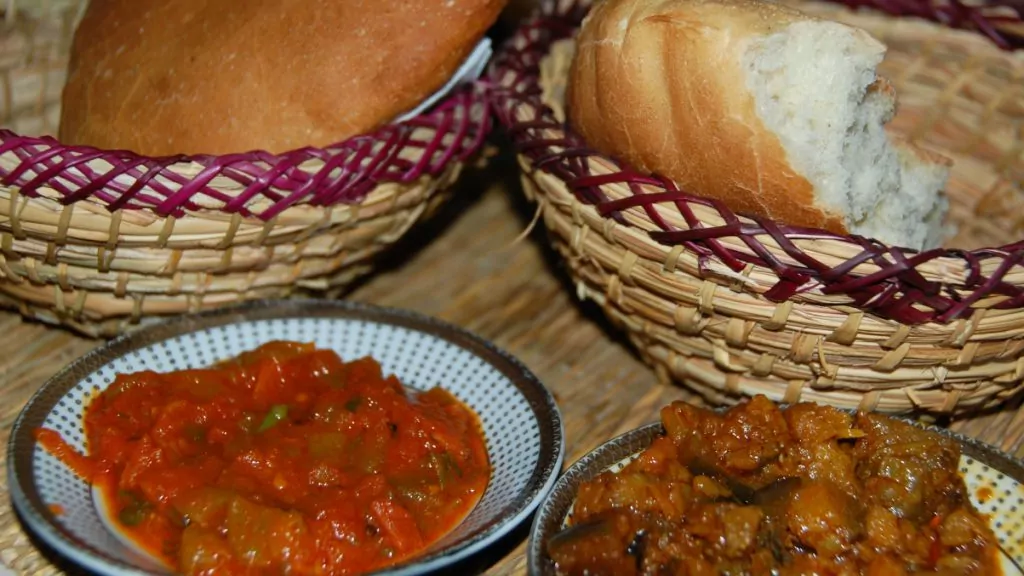
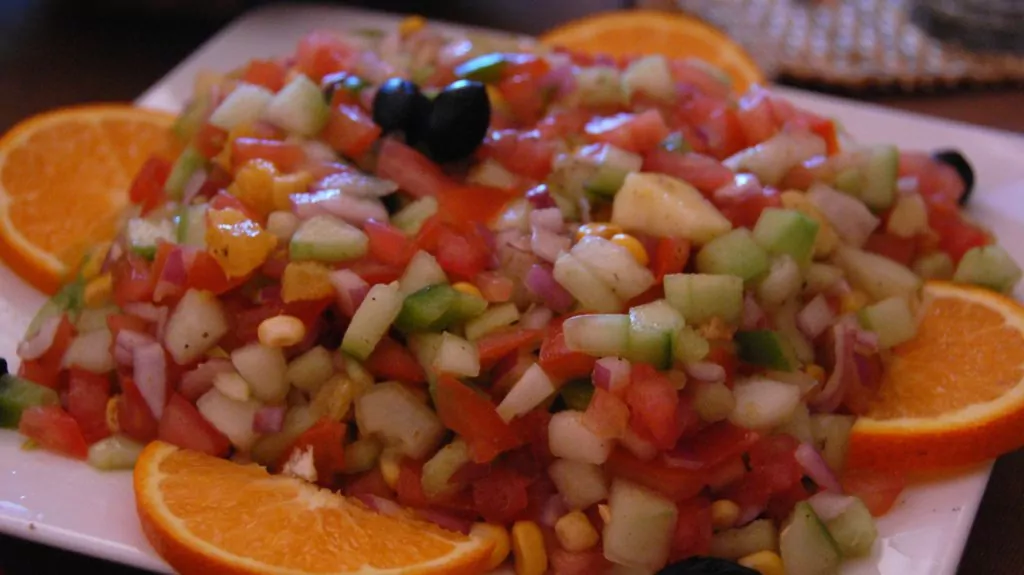
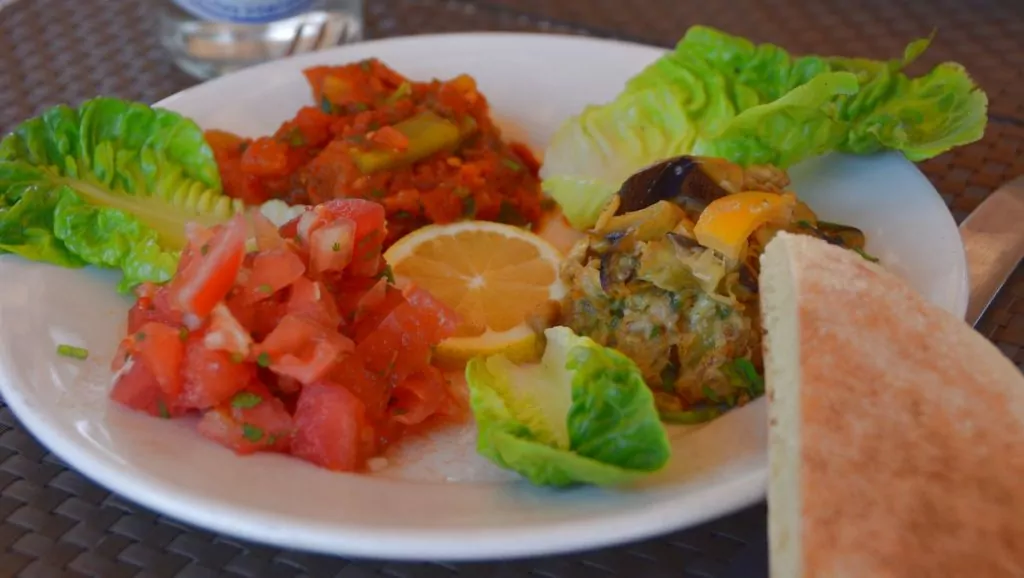
4. Harira soup
Moroccan cuisine also includes soup, such as the popular soup harira. This soup is made from tomatoes, lentils, chickpeas, onions, rice and meat such as beef, lamb or chicken.
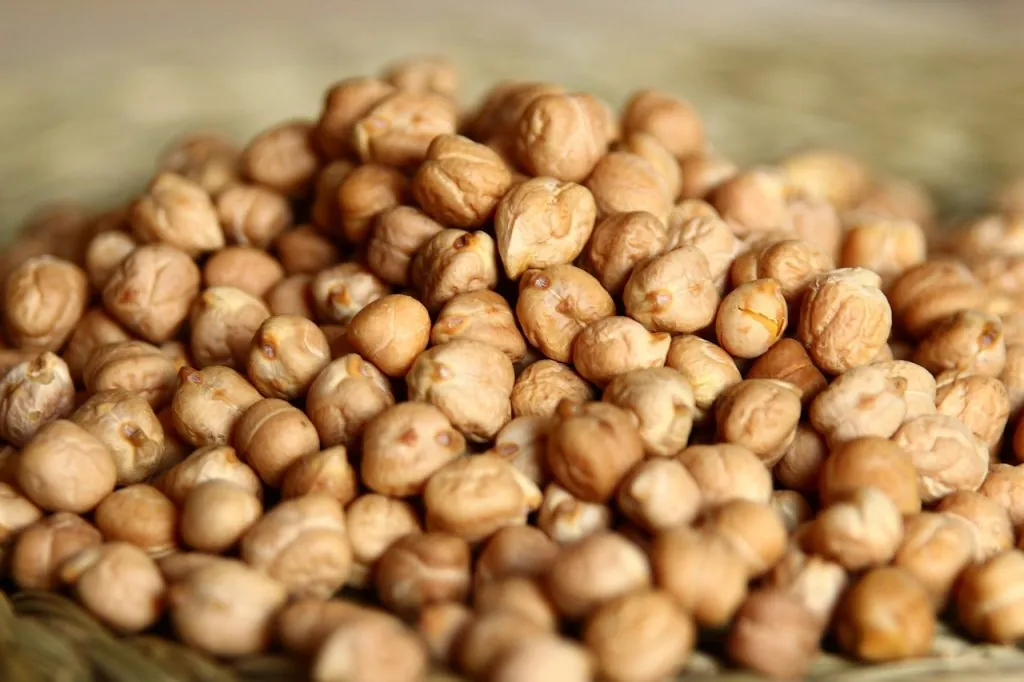
5. tagine
Another type of Moroccan food you won't want to miss is tagine. It is actually the vessel that gives name to the dish and the ingredients can vary. Tagine is simply a ceramic or stoneware pot or casserole, with a cone-shaped lid. It is common for tagine to contain lamb, poultry, fish or chickpeas, along with things like root vegetables, vegetables, eggs, lemon and dried fruit.
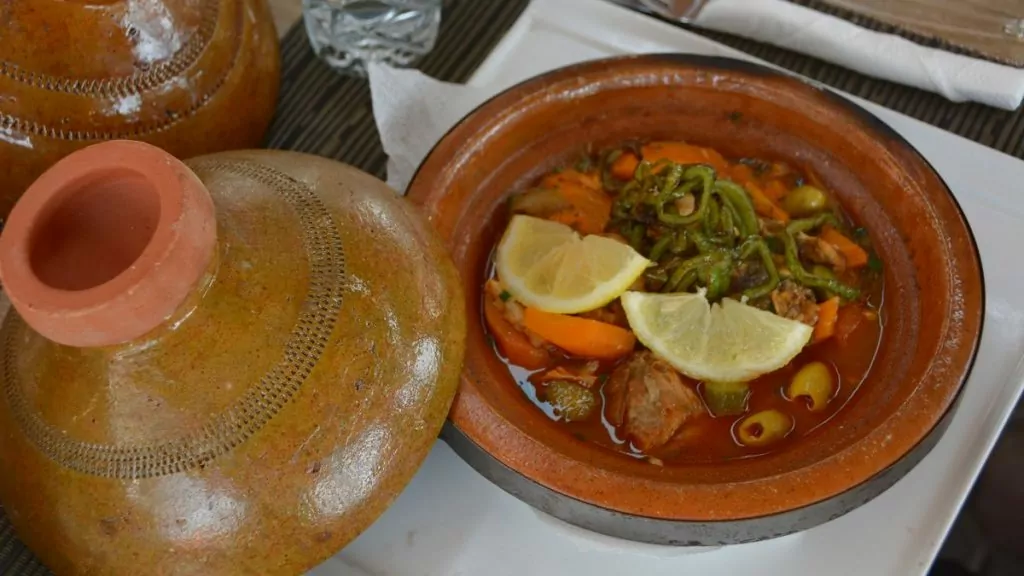
6. lamb
When it comes to meat, you can expect beef, chicken and lamb in particular. Lamb is very popular and can be prepared in many different ways, such as slow-cooked, in a stew or in a tagine. Often the meat is tender and delicious!
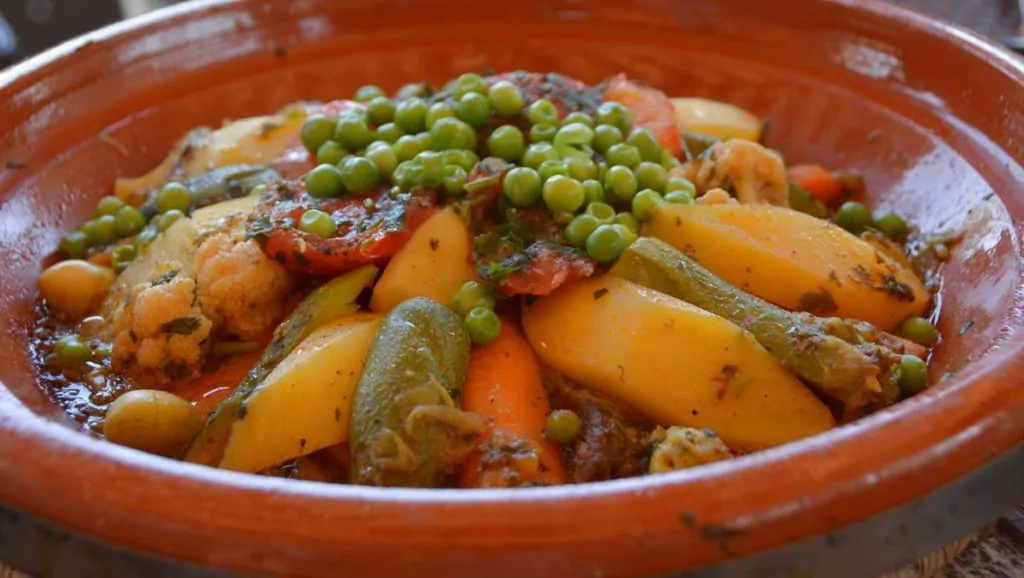
7. Kefta
Kefta are Moroccan meatballs that can be made from beef or lamb, and can be flavoured with garlic and cumin, for example. They can be eaten with various accompaniments, or in a 'kefta tagine', a Moroccan dish of meatballs in tomato sauce with eggs.
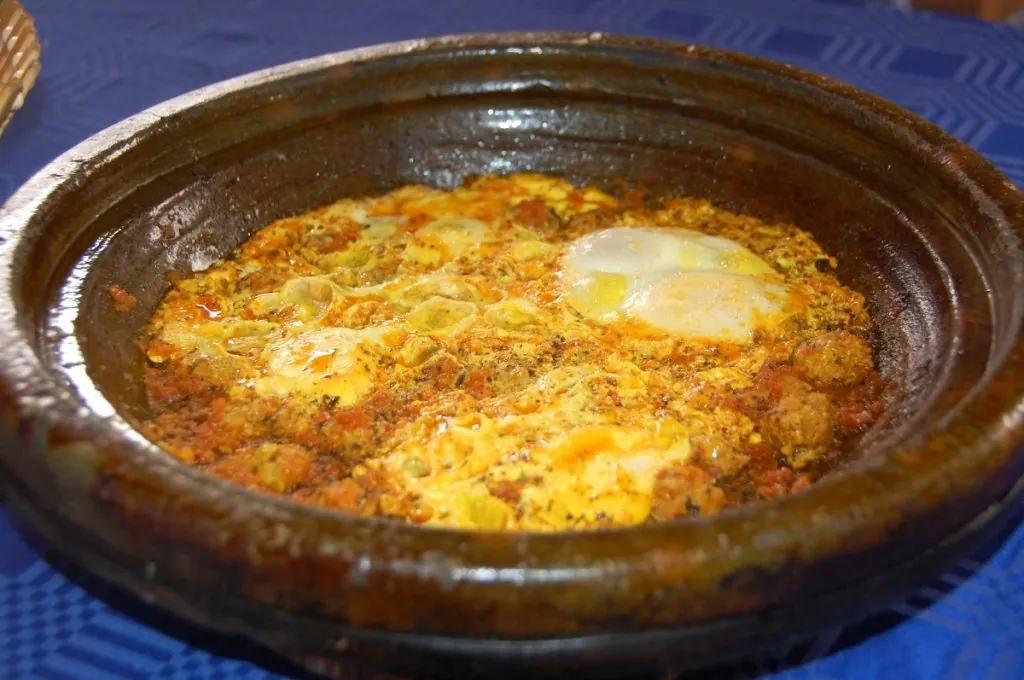
8. merguez
Merguez is a small sausage made from beef and lamb, usually flavoured with cumin and harissa. It originated in North Africa and is eaten in Morocco and elsewhere.
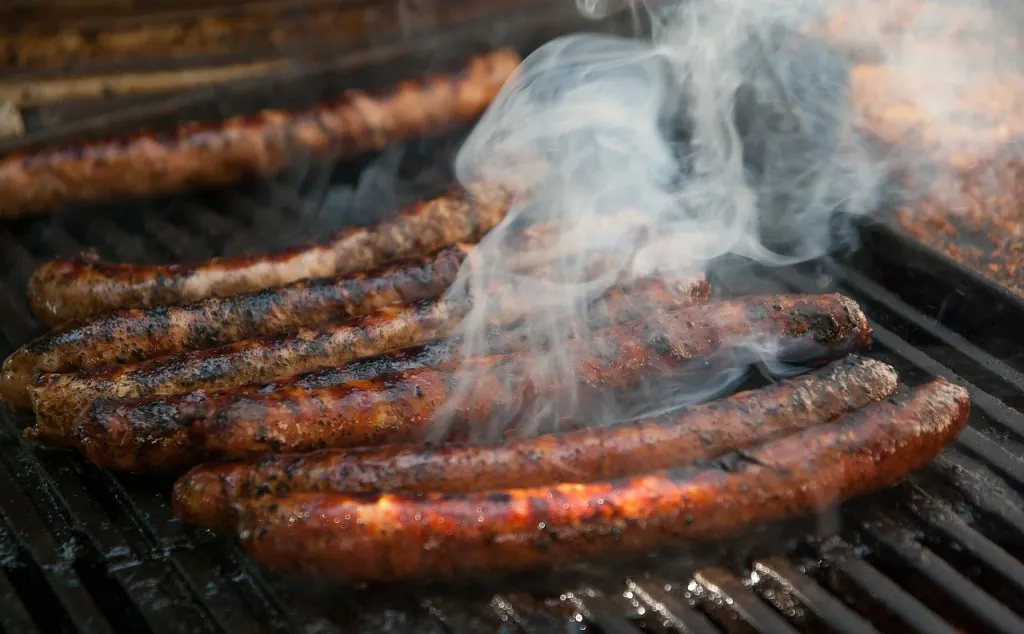
9. Grilled fish
Morocco has a long coastline, and fishing has a long tradition. In other words, it is common for seafood to be served in restaurants, often in the form of grilled fish.
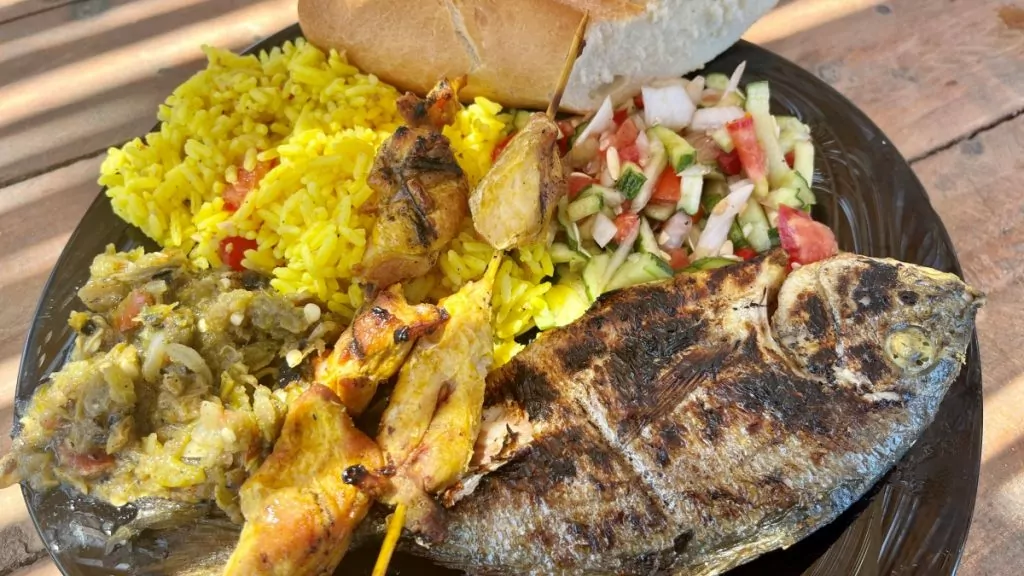
10. pastilla
Pastilla is a type of pie that is often filled with chicken or pigeon, or seafood. It also contains almonds, nuts and dried fruit.
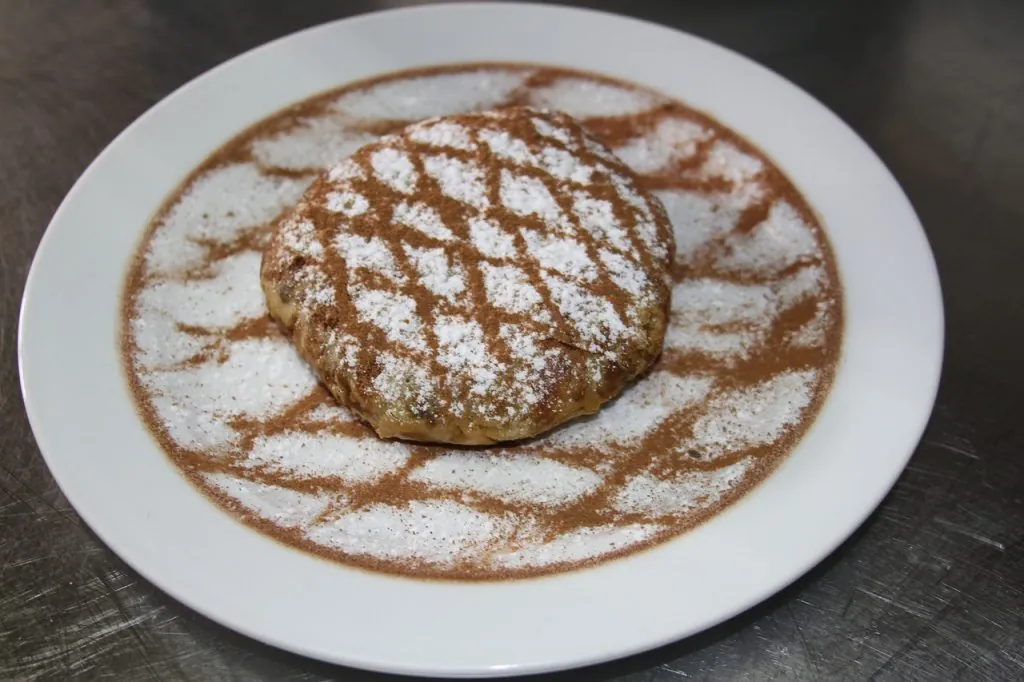
11. argan oil
Morocco produces the fine argan oil, which is made from the argan fruit. The oil is used both for various beauty products and as cooking oil, and it is delicious to dip bread in the cooking oil. Argan oil is a relatively expensive oil because it is made by hand in a process that requires many hours of labour for each decilitre of oil.
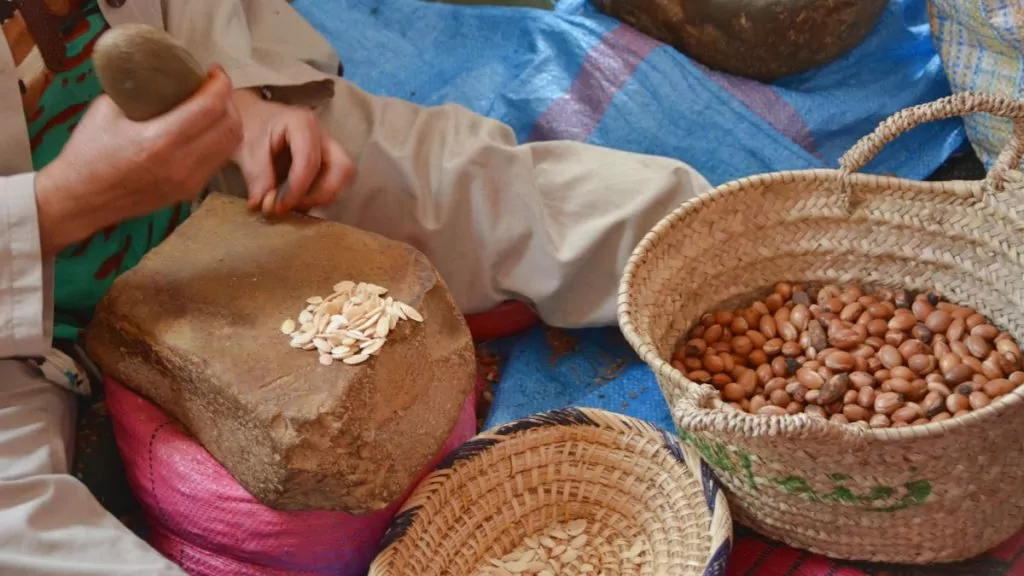
12. Oliver
If you go to a market in Morocco, you'll see olives just about everywhere, in different colours and sizes. Olives are often served as a starter or side dish at meals, or can be included in stews and tagine.
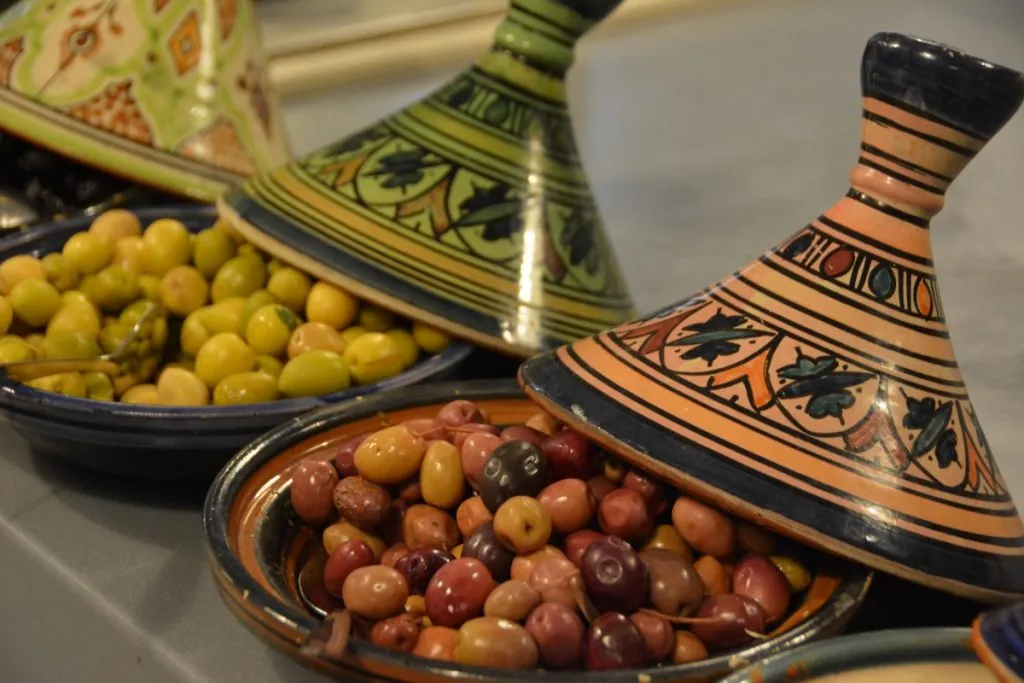
13. pancakes
Pancakes are popular in Morocco, not least on the breakfast table. There is a variety called baghrir, which is a round, thin and fluffy pancake. Another variety is nag, which can be more square in shape. Pancakes can be served with oil, honey or jam, for example, and are often very tasty.
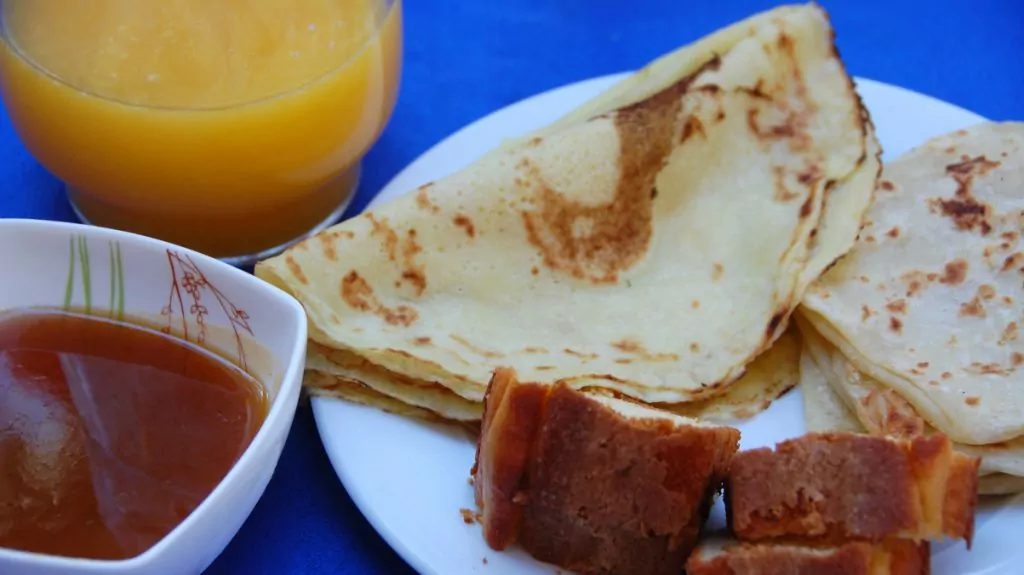
14. dates
Dates are a common element in Moroccan cuisine. You'll find them in abundance in the markets and you can eat them as a snack, just as they are. It is also common to include dates in various dishes.
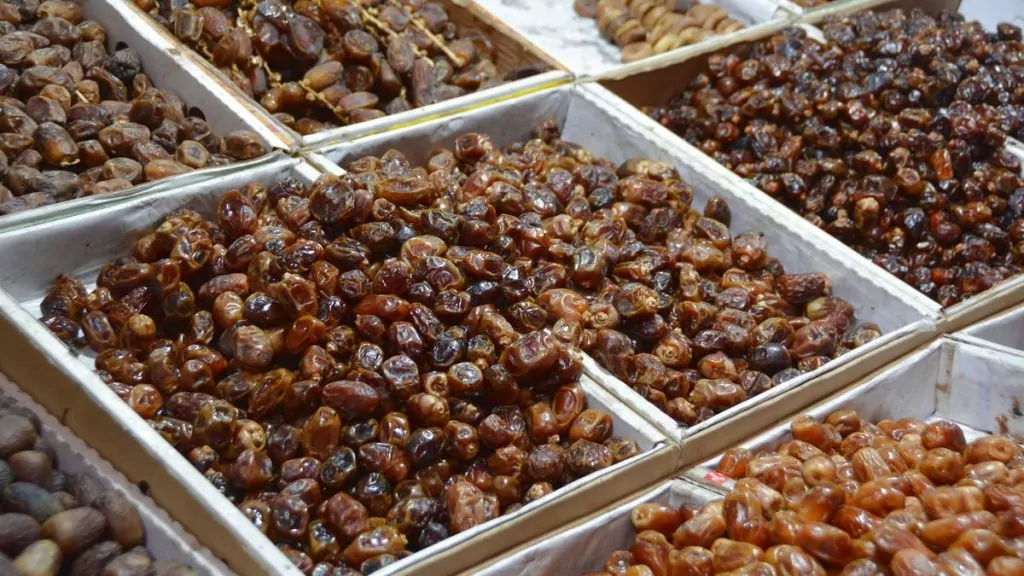
15. oranges
Oranges are an important commodity in Morocco, and during our travels we have often been served oranges as dessert. The orange is often served sliced and spiced with cinnamon, always very tasty!
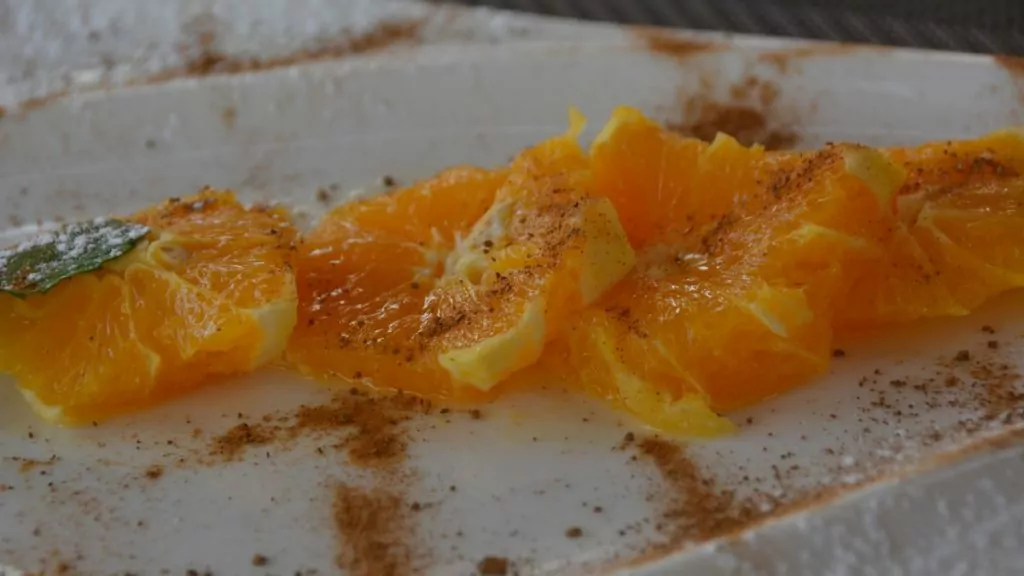
Moroccan food in a restaurant
In restaurants in Morocco you will often find traditional food, especially in the form of couscous and tagine. In cities and tourist areas, you can of course find international food too. Buffets are common in hotels.
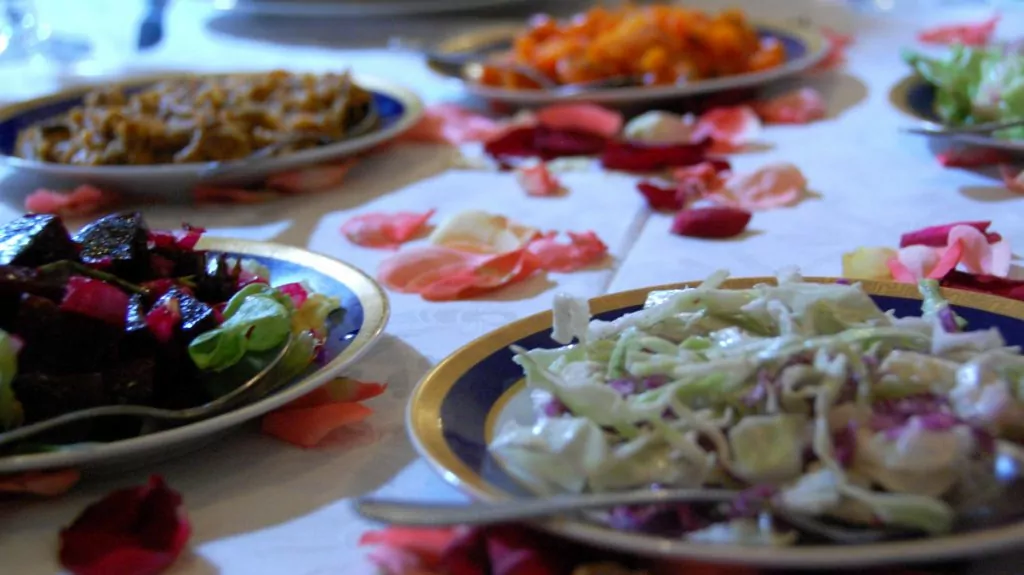
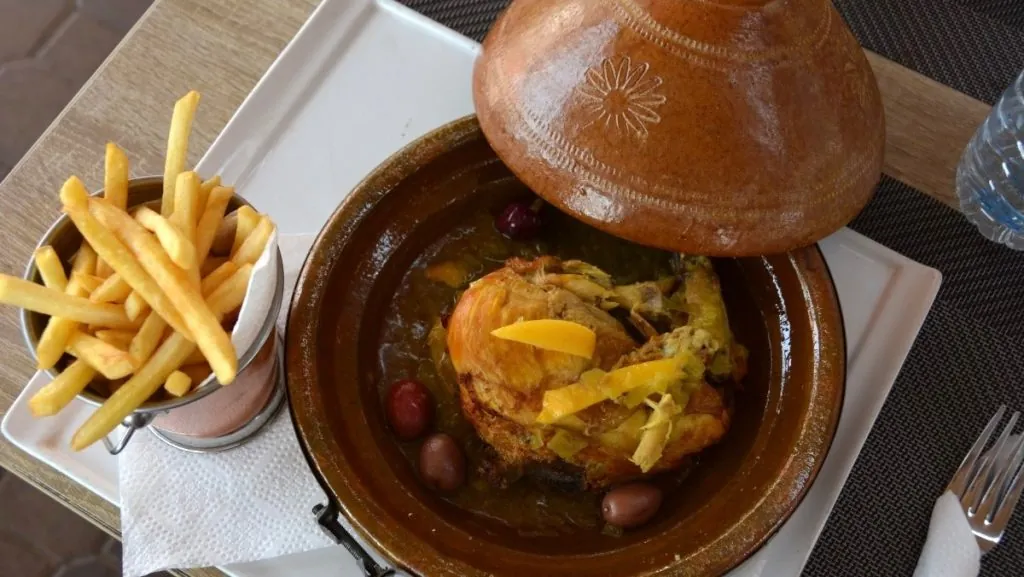
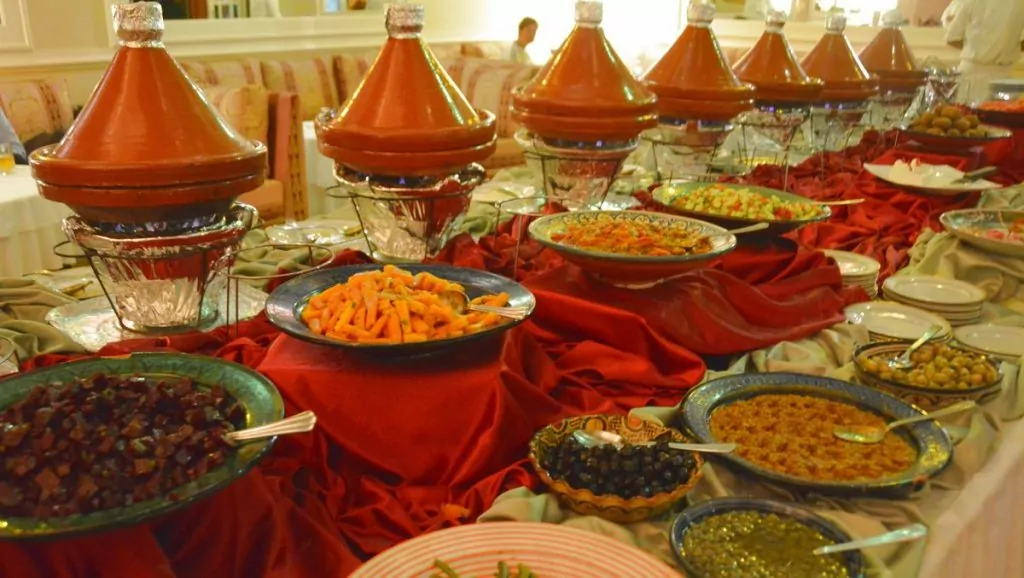
Drinks in Morocco
Moroccan food is great, but what do you drink? Morocco is a predominantly Muslim country and it is therefore common for the population not to drink alcohol. Alcohol is also not served in all restaurants, but only in licensed restaurants, bars and hotels, mainly in tourist areas.
Juice is popular and often very tasty. For example, you can find fresh fruit juice made from oranges, watermelon or pomegranate.
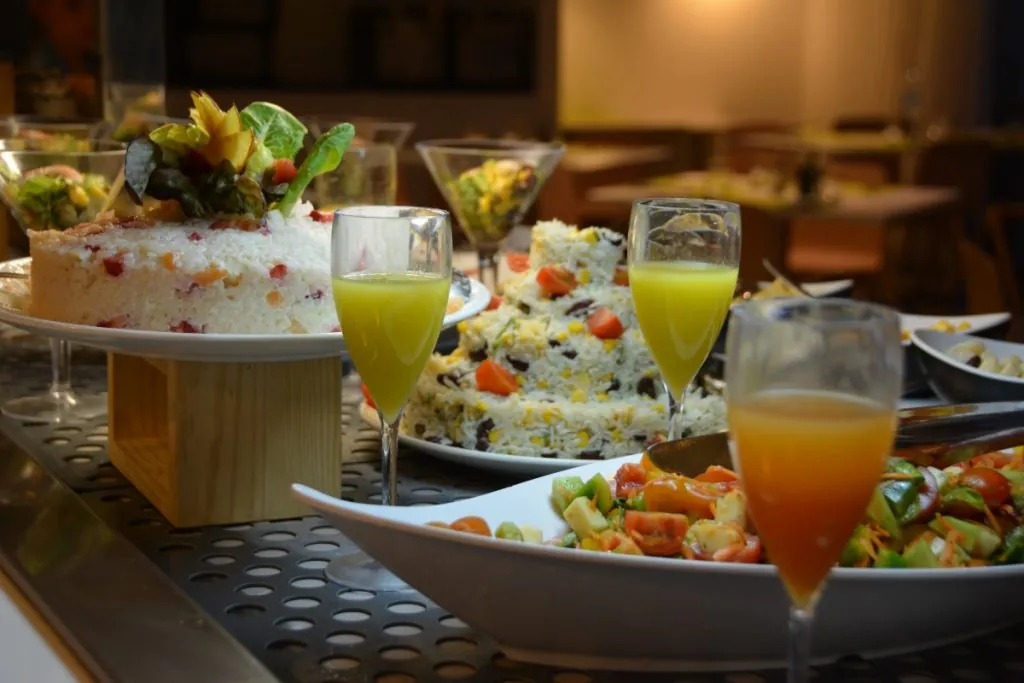
A speciality of Morocco is Moroccan mint date, made with green tea and mint, mixed with lots of sugar. The pouring is just as important as the flavour. You use a teapot with a long, narrow spout and pour it from the top into small drinking glasses.
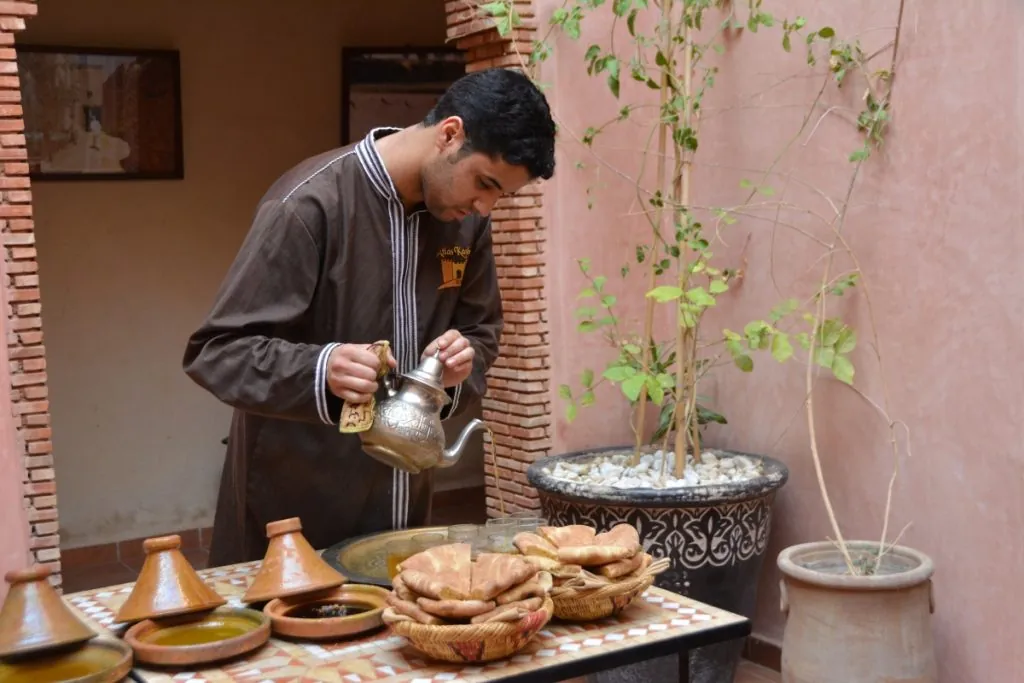
What are your experiences with Moroccan cuisine?
What are your experiences with food in Morocco? Please tell us!


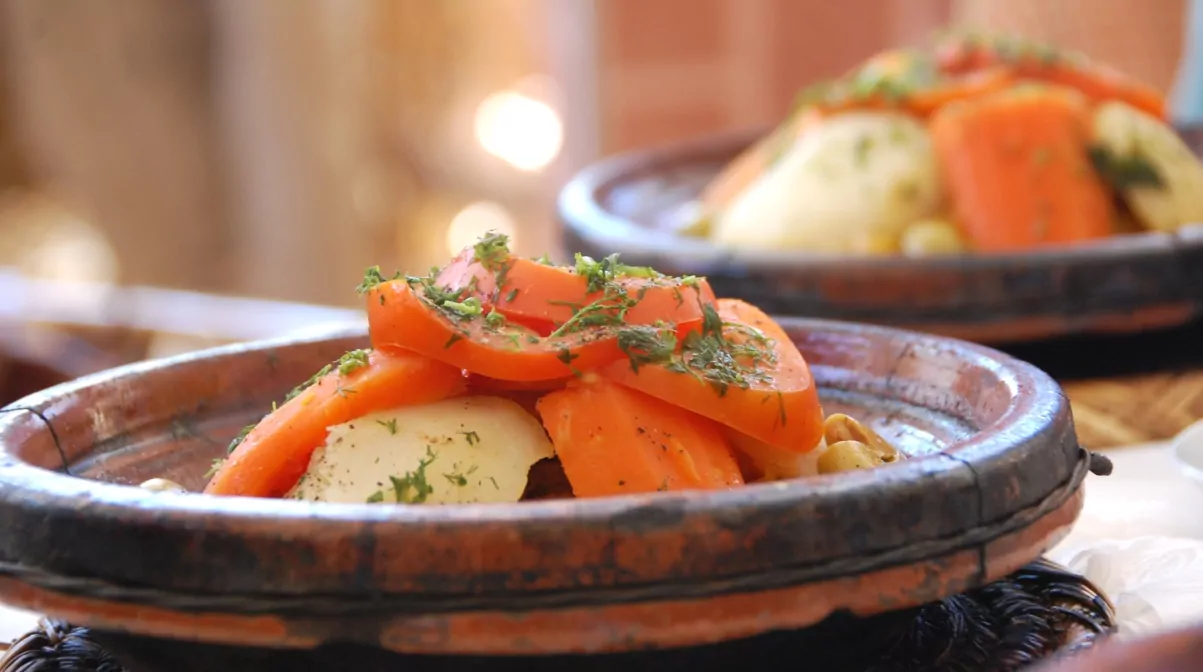






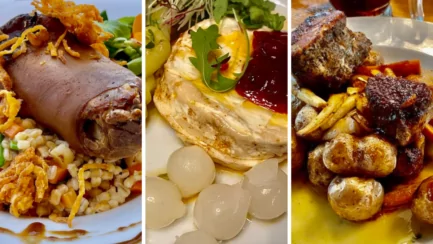
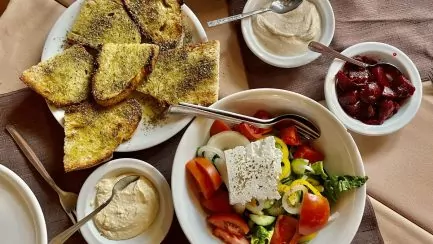
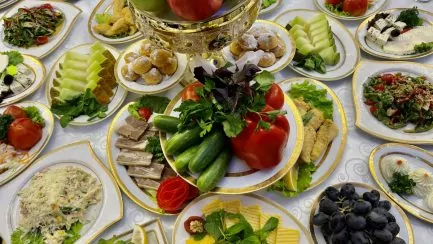
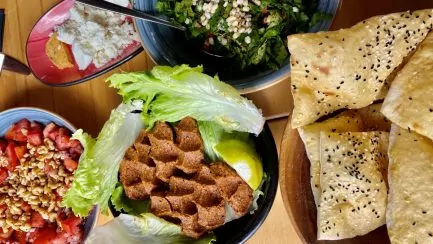
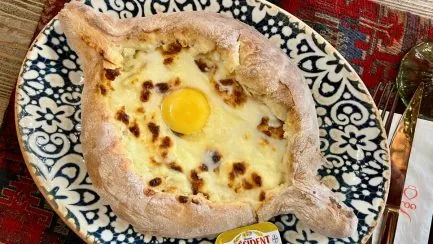
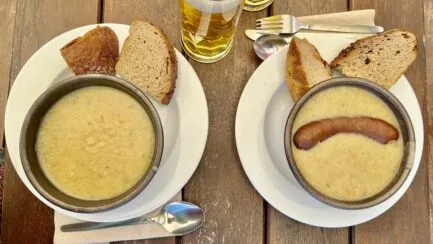



Snows says:
So much good food and pleasing to the eye too. Would suit me perfectly. However, I do not eat lamb but alternatives are undeniably available.
12 January 2025 - 8:49
Helena says:
Yes, absolutely, you eat beef, poultry and fish. Not pork though, because it is a Muslim country.
12 January 2025 - 9:49
Hanneles book paradise says:
There is a Moroccan restaurant in Gothenburg, will probably try.
12 January 2025 - 9:05
Helena says:
Interesting! I've never visited a Moroccan restaurant in Sweden actually...
12 January 2025 - 9:49
Mr Nilsson's wife says:
I have never been to Morocco. I think I'd like the sausage, from the ingredients it looks good. Olives and dates are some of the nastiest things I know. Vegetables and fruit are usually good. Yes, it would probably be fun to try some of the food you show. Many lovely pictures.
Kramiz
12 January 2025 - 9:35
Helena says:
It is often exciting and fun to try food in different countries, c
and it's good to avoid what you don't like 😉
13 January 2025 - 7:41
Eval8 says:
The spices look amazing. Then I have not tasted Moroccan dishes so whether they suited my sense of taste I leave unsaid. But certainly is very tasty.
Happy Sunday!
12 January 2025 - 9:36
Helena says:
We usually like the Moroccan food, good with spices and fruit and stuff. Maybe it can feel a bit repetitive sometimes 😉
13 January 2025 - 7:47
Anita says:
The food is like a work of art! I have not eaten Moroccan food but after the descriptions here I would be more than willing to try. Just to get a plate of pastilla with a beautiful pattern would be a delight.
12 January 2025 - 9:36
Helena says:
Yes, and they are often beautiful vessels and plates 🙂
13 January 2025 - 7:48
BP says:
Moroccan food is really good, if a little flavourless sometimes. But then you can season/salt yourself to your own taste. I love Tagine food, and the same goes for Couscous, which I eat often here at home.
All of the stir-fries are delicious and it's very fortunate that there are a number of Lebanese restaurants in Stockholm that serve these particular stir-fries. Because Lebanese cuisine is in many ways identical to Moroccan cuisine.
Now I got really hungry:-)
Mint tea was never our thing. Too sweet for our taste.
12 January 2025 - 17:08
Helena says:
We also like tagine, often the meat is tender and tasty, but can probably agree that the flavours in some cases can be a little too careful. Lebanese is one of our favourites, love babaganoush and stuff like that!
13 January 2025 - 7:50
The Adventure of the Future says:
I love lamb and all the dishes look very good...I don't know Moroccan food very well so this post caught my eye. Will have to do a few more rounds now. Thanks for the inspiration!
12 January 2025 - 18:48
Helena says:
Glad it was appreciated, thanks for your comment! 🙂
13 January 2025 - 7:51
Jonathan Gharbi de mare says:
Cooking in tagine at home with lamb, olives and vegetables is a lovely reminder of the flavours of Morocco. You can make a lot of food in Sweden but many have too little olive oil. A small family in Morocco buys a 10 or 20 litre can per year :). Yes usually buy cheap frozen lamb pieces from some oriental life, then they become tagine with a lot of oil, onions, potatoes, raisins, carrots and some cumin, 2 hours later ... voilá 😋
13 January 2025 - 9:57
Enna says:
Very tasty and exciting!
13 January 2025 - 10:39
Monnah says:
So much that looks delicious! The husband had been dreaming of the couscous and tagine sent home by our daughter's classmate's mum, so it had been over 15 years when we finally made it to a Moroccan restaurant in Stockholm a few months ago. Finally, he would get to relive this culinary sensation! The disappointment was great - it did not taste revolutionary good at all, rather the opposite. Flavourless, boring. His couscous was supposed to contain saffron, but rather gave the appearance of turmeric. Tips on really good Moroccan restaurants here in Sweden from any readers?
13 January 2025 - 10:40